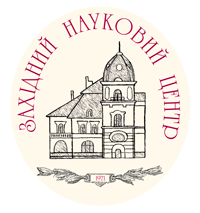Nataliia PANDIAK1, Оksana HERTSYK2, Myroslava KOVBUZ2, Mykhailo YATSYSHYN2, Myroslava TASHAK3, Hanna TKACHUK4
1Ukrainian National Forestry University, Gen. Chuprynky Str., 103, 79057 Lviv, Ukraine
2Ivan Franko National University of Lviv, Kyryla і Mefodiya Str., 6, 79005 Lviv, Ukraine
3National University "Lviv Polytechnic", Stepana Bandery Str., 12, 79013 Lviv, Ukraine
4Khmelnytskyi National University, Instytutska St. 11, 29016 Khmelnytskyi, Ukraine
DOI: https://doi.org/10.37827/ntsh.chem.2025.78.057
APPLICATION OF ELECTROCHEMICAL METHODS FOR STUDYING THE ACTIVITY OF ACYL PEROXIDES OF VARIOUS STRUCTURES
The parameters of voltammetric reduction of acyl peroxides in benzene–methanol and dimethylform¬amide–aqueous solutions of tetraalkylammonium salts have been obtained using mercury drop and palladium electrodes. The reduction currents of the acyl group on the Pd electrode, as well as on the PKE, are diffusion-controlled and described by the Ilkovich equation. As the concentration of the depolarizer and the rotation speed of the electrode increase up to 3100 rpm, the reduction currents increase proportionally. It has been shown that the decisive factor determining the reactivity of these compounds is the nature of the peroxide bond and the overall molecular structure. It has been established that the z-wave observed during the polarographic analysis of diacyl groups corresponds to the reduction of carbon dioxide released during the electrolysis of the peroxide. Based on a comprehensive study of the electroreduction of organic peroxides on the dropping mercury electrode (DME) and the palladium rotating disk electrode (Pd-RDE), the number of electrons involved in the reduction processes was established and the diffusion coefficients of the peroxides were determined. The complications of the reduction of acyl peroxides on the Pd-RDE lead to a noticeable differentiation in the reduction of individual peroxides in their mixture. The use of the Pd-RDE in combination with regulation of the thermodynamic properties of the background solvent made it possible to selectively determine diacyl peroxides in binary mixtures with sufficiently high accuracy. To establish the mechanism of formation and interaction of intermediates in the decomposition of peroxide molecules, both with the original peroxide molecules and with solvent molecules, and their deactivation, the rotating ring-disk electrode (RRDE) method was used.
Keywords: acyl peroxides, voltammetric reduction, reactivity, rotating ring-disk electrode..
References:
-
1. Sheldon R.A. In the Chemistry of Peroxides; Patai’s., Ed.; John Wiley & Sons: Chichester. 1. 1983. P. 161–200.
(https://doi.org/10.1002/9780470771730.ch6).
2. Zaichenko A., Mitina N., Kovbuz M., Artym I., Voronov S. Surface-Active Metal-Coordinated Oligoperoxidic
Radical Initiators. 1. The Interrelation Between the Microstructure of Ditertiary Oligoperoxides and their Ability
to Form Stable Metal Complexes. J. Polym. Sci. 2000. Vol. 38. P. 516–527.
https://doi.org/10.1002/(SICI)1099-0518(20000201)38:3<516::AID-POLA18>3.0.CO;2-R.
3. Denisov E.T., Denisova T.G., Pokidova T.S. Handbook of Free Radical Initiators; John Wiley and Sons: New
York. 2005. 983 p.
4. Sawada H. Development of Fluorinated Polymeric Functional Materials Using Fluorinated Organic Peroxide as Key
Material. Polym. J. 2007. Vol. 39(7). P. 637–650. https://doi.org/10.1295/polymj.PJ2006242.
5. Rao P.S., Sathyanarayana D.N., Palaniappan S. Polymerization of Aniline in an Organic Peroxide System by the
Inverted Emulsion Process. Macromolecules. 2002. Vol. 35. P. 4988–4996. https://doi.org/10.1021/ma0114638.
6. Thaworn K., Buahom P. and Areerat S. Effects of Organic Peroxides on the Curing Behavior of EVA Encapsulant
Resin. J. of Polym. Chem. 2012. Vol. 2(2). Р. 77–85. https://doi.10.4236/ojpchem.2012.22010.
7. Reuter Yu.V., Nosova N.H. Radical Grafting of Polypropylene Chains onto Peroxidized Oligomers. Visnyk of the
State University "Lviv Polytechnic" Chemistry, Technology of Substances and Their Application. 1999. Vol. 361.
P.62–63. (in Ukrainian).
8. Roiter Yu., Samaryk V., Nosova N., Varvarenko S., Pötschke P., Voronov S. Radikal Processes for the Creation
of Compatibilizing Layers in Polyolefin Blends. Macromolecuar Symposia. 2001. № 164. C. 377–387.
https://doi.org/10.1002/1521-3900(200102)164:1%3C377::AID-MASY377%3E3.0.CO;2-A
9. Vasudevan D. Cyclic voltammetric studies on the electroreduction of peroxides in aprotic media. Bulletin of
Electrochemistry. 2000. Vol. 16(6). P. 277–279.
10. Abidia M., Derbelb N., Hkirib R., Saida H., Morallond E., Besbes S. Electrodeposition of
4,4'-di-tert-butylbiphenyl peroxide from the anodic oxidation of p-tert-butylphenol in an alkaline acetonitrile
solution. J. Appl. Electrochem. 2017. Vol. 47. P. 507–516. https://doi.org/10.1007/s10800-016-1041-2.
11. Wilson G.O., Henderson J.W., Caruso M.M., Blaiszik B.J., Mcintire P.J., Sottos N.R., White S.R., Moore J.S.
Evaluation of peroxide initiators for radical polymerization-based self-healing applications. J. Polym. Science:
Part A: Polym. Chem. 2010.Vol. 48. P. 2698–2708. https://doi.org/10.1002/pola.24053.
12. Kovbuz M.O., Hertsyk O.M., Zaichenko O.V., Pandyak N.L., Gorbachevska K.R. Electrochemical analysis of
multifunctional peroxide initiators. Proc. Shevchenko Sci. Soc. Chem. Sci. 2003. Vol. 1. P.145–151. (in
Ukrainian).
13. Pandyak N., Yatsyshyn M., Gorbachevska C. Electrochemical study of complex acetylene-containing peroxide
initiators. Visnyk Lviv Univ. Ser. Chem. 2002. Vol. 42. P. 62–65. (in Ukrainian).
14. Bard A.J., Faulkner L.R. Electrochemical Methods: Fundamentals and Applications. John Wiley & Sons, Inc.,
New York, 2000. 864 p.
15. Pandyak N.L., Yatsyshyn M. Kinetic Regularities of thermal dissociation of acetylene peroxide initiators.
Sc. Bull. UNFU. 2003. Vol. 13. P.110–113. (in Ukrainian).
16. Pandyak N.L, Yatsyshyn M.M, Khmilovskaya M.I. On the mechanism of electrochemical reduction of alkyne
peroxides in dimethylformamide-aqueous solutions. J. Lviv Polyt. Nat. Univ. 2005.Vol. 536. P. 32–38. (in
Ukrainian).
17. Pandiak N., Hertsyk O., Yatsyshyn M., Tashak M. Influence of the nature of the electrode on the reactivity
of acetylene-containing peroxide initiators. Proc. Shevchenko Sci. Soc. 2021. Vol. 66. P. 47–56. (in Ukrainian).
https://doi.org/10.37827/ntsh.chem.2021.66.047.
18. Jianhong Pei, Xiao-yuan Li. Electrocatalysis and Flow-Injection Analysis of Hydrogen and Organic Peroxides
at CuPtCl6 Chemically Modified Electrodes. Electroanalysis. Vol. 11(16). 1999. P. 1211–1217.
https://doi.org/10.1002/(SICI)1521-4109(199911)11:16<1211::AID-ELAN1211>3.0.CO;2-V
19. Laine D., Cheng F. Analysis of hydrogen peroxide and an organic hydroperoxide via the electrocatalytic
Fenton reaction. Microchem. J. 2009. Vol. 91(1). Р. 78–81. https://doi.org/10.1016/j.microc.2008.08.005.
20. Wang J, Angnes L, Liang C, Evans O. Electrocatalysis and amperometric detection of organic peroxides at
modified carbon-paste electrodes. Talanta. 1991 Vol. 38(10). P. 1077–1081.
https://doi.org/10.1016/0039-9140(91)80222-L.
21. Vedenyapina M. D., Skundin A. M., Vil V. A., Kazakova M. M., Barsegyan Ya. A. Electrochemical reduction of
spirocyclopentimalonyl peroxide in an aqueous medium. J. Phys. Chem. 2020. Vol. 94(4). P. 624–628. https://
doi:10.1134/S0036024420040238.
22. Rohring К., Harnisch F. 3D-printed add-on allows using commercially available rotating disc electrodes in
tilted position. Electr. Comm. 2025. Vol. 170. 107854. https://doi.org/10.1016/j.elecom.2024.107854.
23. Zimer A.M., Da Silva M.M., Eduardo G., Machado E.G., Varela H., Mascaro L.H., Pereira E.H. Development of
a versatile rotating ring-disc electrode for in situ pH measurements . Analytica Chimica Acta. 2015. Vol.
897(15). P. 17–23. http://dx.doi.org/10.1016/j.aca.2015.09.047.
How to Cite
PANDIAK N., HERTSYK O., KOVBUZ M., YATSYSHYN M., TASHAK M., TKACHUK H. APPLICATION OF ELECTROCHEMICAL METHODS FOR STUDYING THE ACTIVITY OF ACYL PEROXIDES OF VARIOUS STRUCTURES. Proc. Shevchenko Sci. Soc. Chem. Sci. 2025. Vol. 78. P. 57-68.

